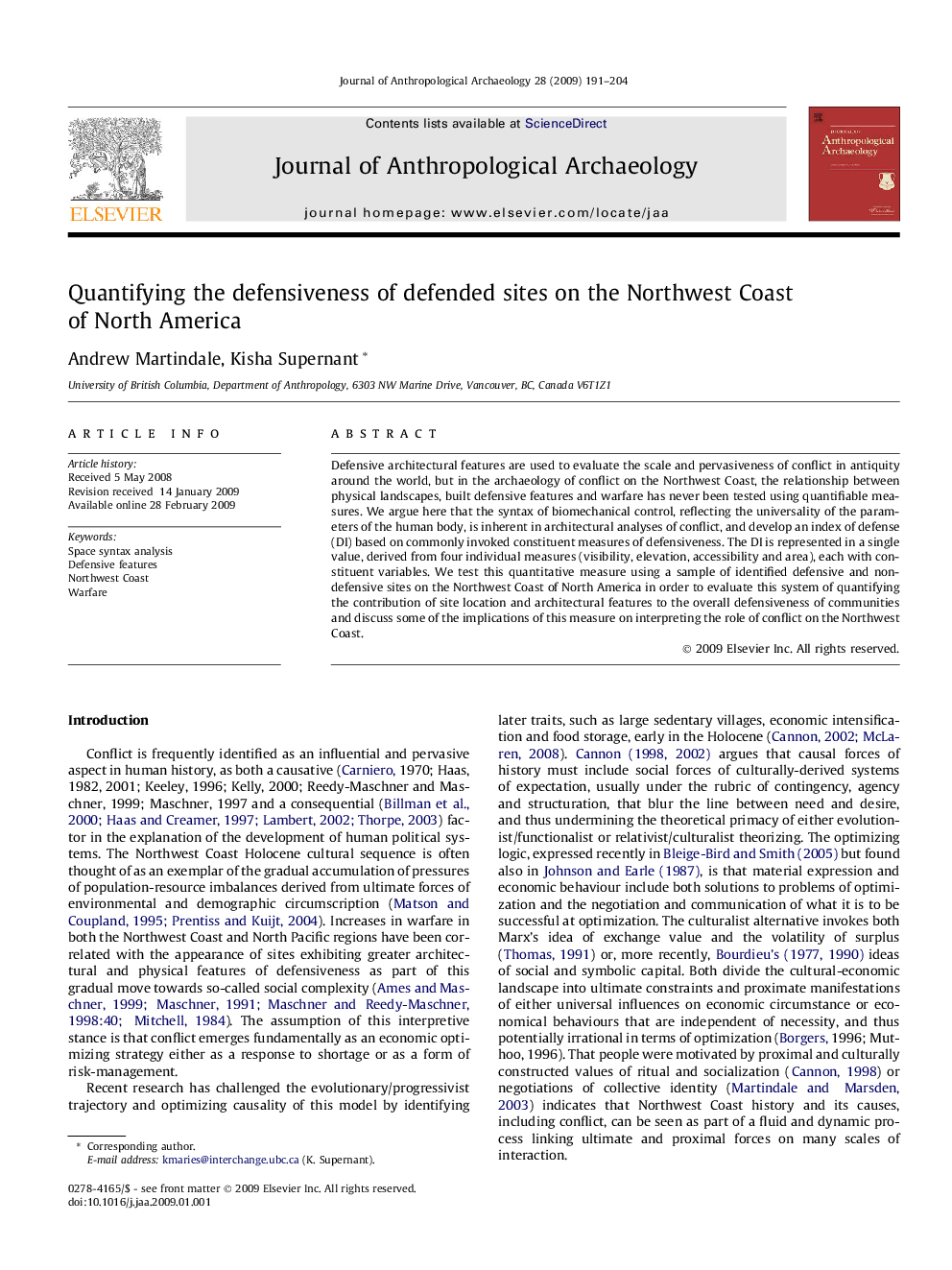| Article ID | Journal | Published Year | Pages | File Type |
|---|---|---|---|---|
| 1035171 | Journal of Anthropological Archaeology | 2009 | 14 Pages |
Defensive architectural features are used to evaluate the scale and pervasiveness of conflict in antiquity around the world, but in the archaeology of conflict on the Northwest Coast, the relationship between physical landscapes, built defensive features and warfare has never been tested using quantifiable measures. We argue here that the syntax of biomechanical control, reflecting the universality of the parameters of the human body, is inherent in architectural analyses of conflict, and develop an index of defense (DI) based on commonly invoked constituent measures of defensiveness. The DI is represented in a single value, derived from four individual measures (visibility, elevation, accessibility and area), each with constituent variables. We test this quantitative measure using a sample of identified defensive and non-defensive sites on the Northwest Coast of North America in order to evaluate this system of quantifying the contribution of site location and architectural features to the overall defensiveness of communities and discuss some of the implications of this measure on interpreting the role of conflict on the Northwest Coast.
